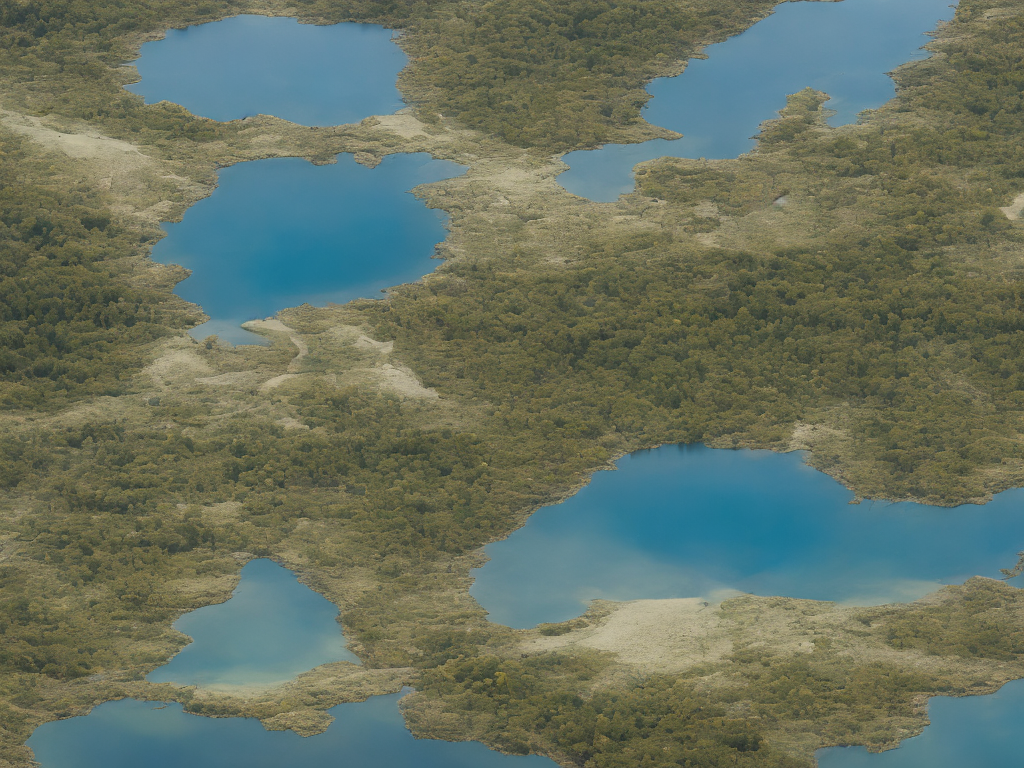
Lakes and inland seas are two types of bodies of water that exist on the Earth's surface. While they might look similar, there are many differences between these two. In this article, we will take a deeper look at the differences between lakes and inland seas.
Definition of Lake and Inland Sea:
A lake is a large body of water that is surrounded by land on all sides. While there is no strict definition for what constitutes a large body of water, most people would consider a body of water that is larger than a pond or a river to be a lake. Lakes are typically found in areas that have been formed by glaciers or tectonic plate movements.
On the other hand, an inland sea is a body of saltwater that is also surrounded by land on all sides. These bodies of water are often much larger than lakes, covering vast expanses of land. These seas are often connected to the ocean by a narrow channel or strait. They are usually formed by tectonic plate movements or by the rising and falling of sea levels.
Size and Depth:
One of the main differences between lakes and inland seas is the size and depth. Lakes are typically smaller than inland seas and have a smaller volume of water. This is because lakes are often created by the movement of glaciers, which scrape out depressions in the land. In contrast, inland seas are often created by tectonic activity, which can create basins that are much deeper than those found in lakes.
The largest lake in the world is the Caspian Sea, which is also an inland sea. It covers an area of approximately 143,000 square miles, making it nearly six times larger than the largest lake in North America, the Great Lakes. Inland seas can also be much deeper than lakes. For example, the deepest point in the Caspian Sea is approximately 3,363 feet, while the deepest point in the Great Lakes, Lake Superior, is approximately 1,333 feet.
Water Type:
Another difference between lakes and inland seas is the type of water found in each. Lakes are typically freshwater, meaning they contain little to no dissolved salt. Inland seas, however, are saltwater or brackish, meaning they contain a significant amount of dissolved salt. This is because they are often connected to the ocean.
However, there are exceptions to this. Some lakes, such as the Dead Sea, are so salty that they are denser than the human body, making it easy to float on the surface. The Great Salt Lake in Utah is another example of an extremely salty lake. On the other hand, some inland seas, such as the Caspian Sea, have a lower salinity than the ocean.
Formation:
Lakes and inland seas are formed by different geological processes. Lakes are typically formed when glaciers carve out depressions in the land. These depressions can then fill with water, creating a lake. Other lakes may be formed by volcanic activity or by a buildup of sediment. In contrast, inland seas are typically formed by tectonic plate movements or by the rising and falling of sea levels. Some inland seas, such as the Aral Sea in Central Asia, have been dramatically affected by human activities such as irrigation, causing their water levels to drop significantly.
Biodiversity:
Finally, lakes and inland seas differ in terms of their biodiversity. Lakes are often home to a diverse range of aquatic life, including fish, crustaceans, and amphibians. They may also support a range of bird and mammal species that feed on these aquatic organisms. However, because they are typically freshwater, they cannot support many marine species.
Inland seas, on the other hand, are home to a diverse range of marine life. They support a wide variety of fish, crustaceans, and other sea creatures, many of which cannot survive in freshwater environments. Inland seas also provide important habitat for a range of migratory bird species, many of which use them as stopover points during their journeys.
Conclusion:
In conclusion, while lakes and inland seas might look similar, they are actually quite different in many ways. Lakes are typically smaller bodies of freshwater, while inland seas are massive basins of saltwater. Inland seas are more geologically active than lakes and can support a wider variety of marine life. Despite these differences, both lakes and inland seas play an important role in our planet's ecosystem and provide valuable habitat for many different species.
 Self-Instruct
Self-Instruct